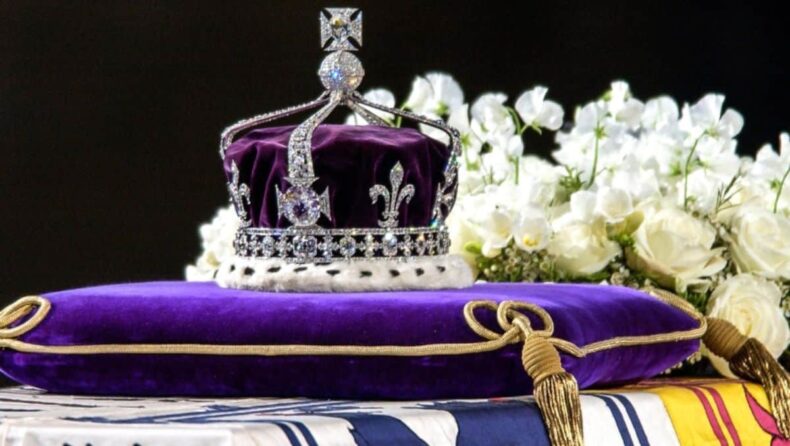The Kohinoor was found in Andhra Pradesh’s Guntur in the 14th century in India during the reign of Kaaktiya Dynasty.
Following the death of Britain’s longest-reigning monarch, Queen Elizabeth II, the buzz around bringing back one of the world’s largest diamonds has surfaced, responding to this, India indicated that the country will now find out ways to bring back the Kohinoor.
When asked about the demand, Ministry of External Affairs (MEA) Spokesperson Arindam Bagchi referred to the government’s response on the issue in Parliament a few years ago. “My understanding that the government of India responded it in Parliament a few years ago, We have said that we have been raising this matter from time to time with the UK government and we will continue to explore ways and means for obtaining a satisfactory resolution of the matter,” he, as quoted by the news agencies.

The diamond was found in a city of Andhra Pradesh’s Guntur in the 14th century in India during the reign of the Kaaktiya Dynasty. After being passed on to the many rulers of the Mughal Empire, Sikh Maharaja Ranjit Singh possessed it in Lahore, post when he came to Punjab. The 108-carat Kohinoor gem was given to Queen Victoria in 1849 following the annexation of Punjab during the rule of Maharaja Ranjit Singh’s son Dileep Singh’s rule.
After the death of Queen Elizabeth II who died at 96 last month, there were speculative reports in the British media about the possibility of Camilla wearing the Kohinoor diamond when she is crowned Queen’s Consort at a ceremony on 6 May next year. In February this year, the Queen announced that Camilla Parker Bowles would become the Queen Consort when Charles takes over the reins of the monarchy in England.
Following the death of Queen Elizabeth II, several Twitter users in India demanded the return of Kohinoor back to India.The Centre has made demands for Kohinoor’s returns on multiple occasions. However, the British government have rejected it every times.
Origin of Kohinoor
It is believed that the diamond was first mentioned more than 5000 years ago in a Sanskrit script, where it was called the Syamantaka.
Sayamantka

It is worth mentioning that there is only speculation that the Syamantaka and the Kohinoor are the same diamonds. After this first written mention, for over 4,000 years the diamond is not mentioned.
Mahraja Ranjit Singh

Up until 1304 the diamond was in the possession of the Rajas of Malwa, but back then, the diamond was still not named as Kohinoor. In 1304, it was belonged to the Emperor of Delhi, Allaudin Khilji.
In 1339, the diamond was taken back to the city of Samarkand, where it stayed till 300 years. In 1306 in a Hindi writing, a curse is placed on the men, who will wear the diamond: “He who owns this diamond will own this world, but will also know all its misfortunes. Only God, or a woman, can wear it with impunity.”
Nadir and Mahamad

The Persian general Nadir Shah came to India in 1739. He wanted to conquer the throne, which had been weakened during the reign of Sultan Mahamad. The Sultan lost the decisive battle and surrender to Nadir.
It was him the one that gave the diamond its current name, Koh-i-noor which means “Mountain of light”.
But Nadir Shah did not lived for so long, because in 1747 he was assassinated and the diamond got to one of his generals, Ahmad Shah Durrani.
British East India company

When Nadir Shah heard of the Kohinoor, he decided he wants it in his possession.
After the diamond was handed to Queen Victoria, it was exhibited at the Crystal Palace after a year later. But the “Mountain of Light” was not shiny as the other cut gemstones of that era and there is a great disappointment regarding it.
In 1852 the Queen decided to reshape the diamond and it was taken to a Dutch jeweler, Mr Cantor who cutted it to 108.93 carats.
Queen Victoria wore the diamond occasionally afterwards. It left in her will that the Koh-i-noor should only be worn by a female queen.
If the head of state is any man, his wife would have to carry the diamond. After Queen Victoria’s death, the Kohinoor became part of the Crown Jewels.













